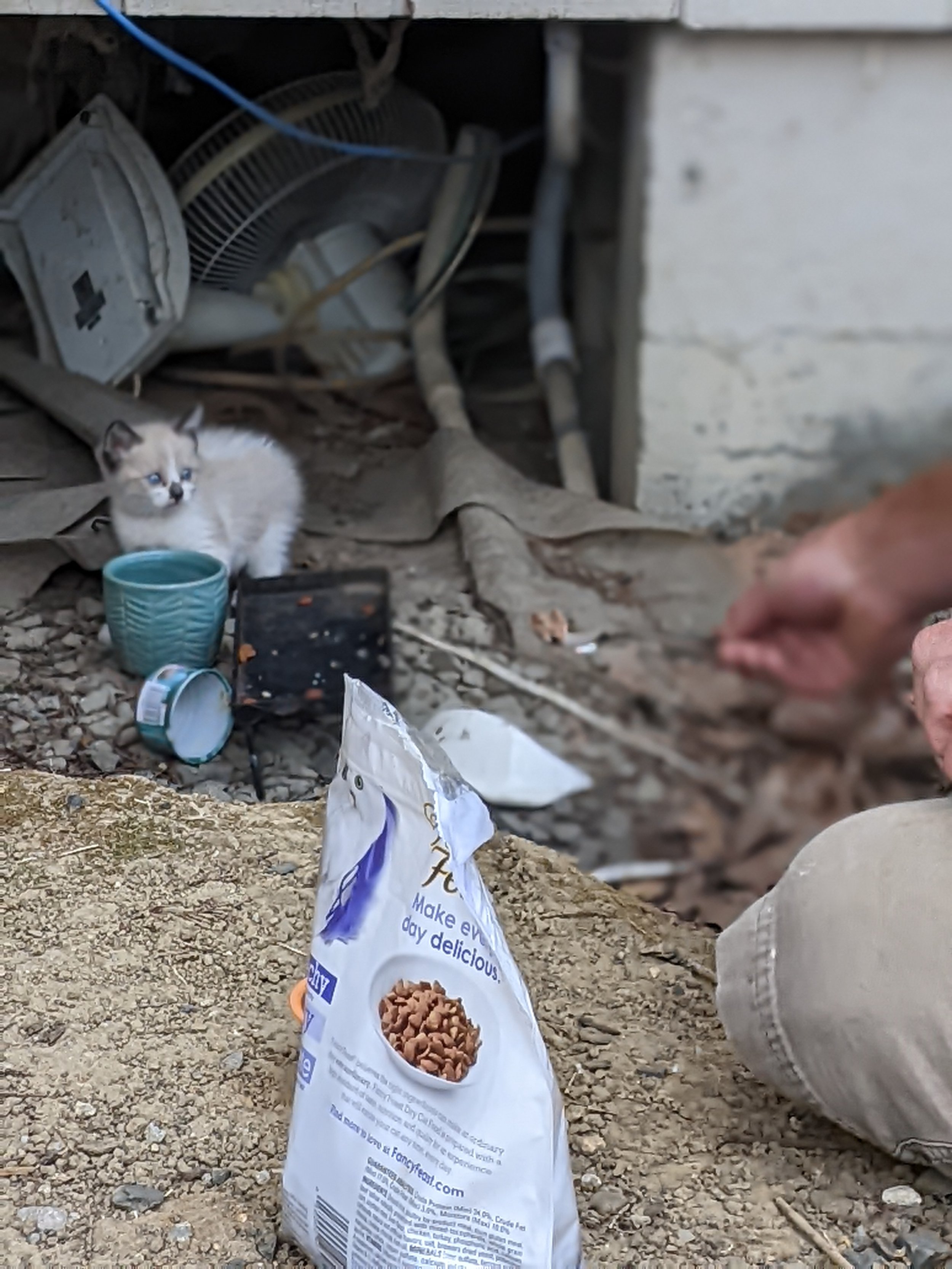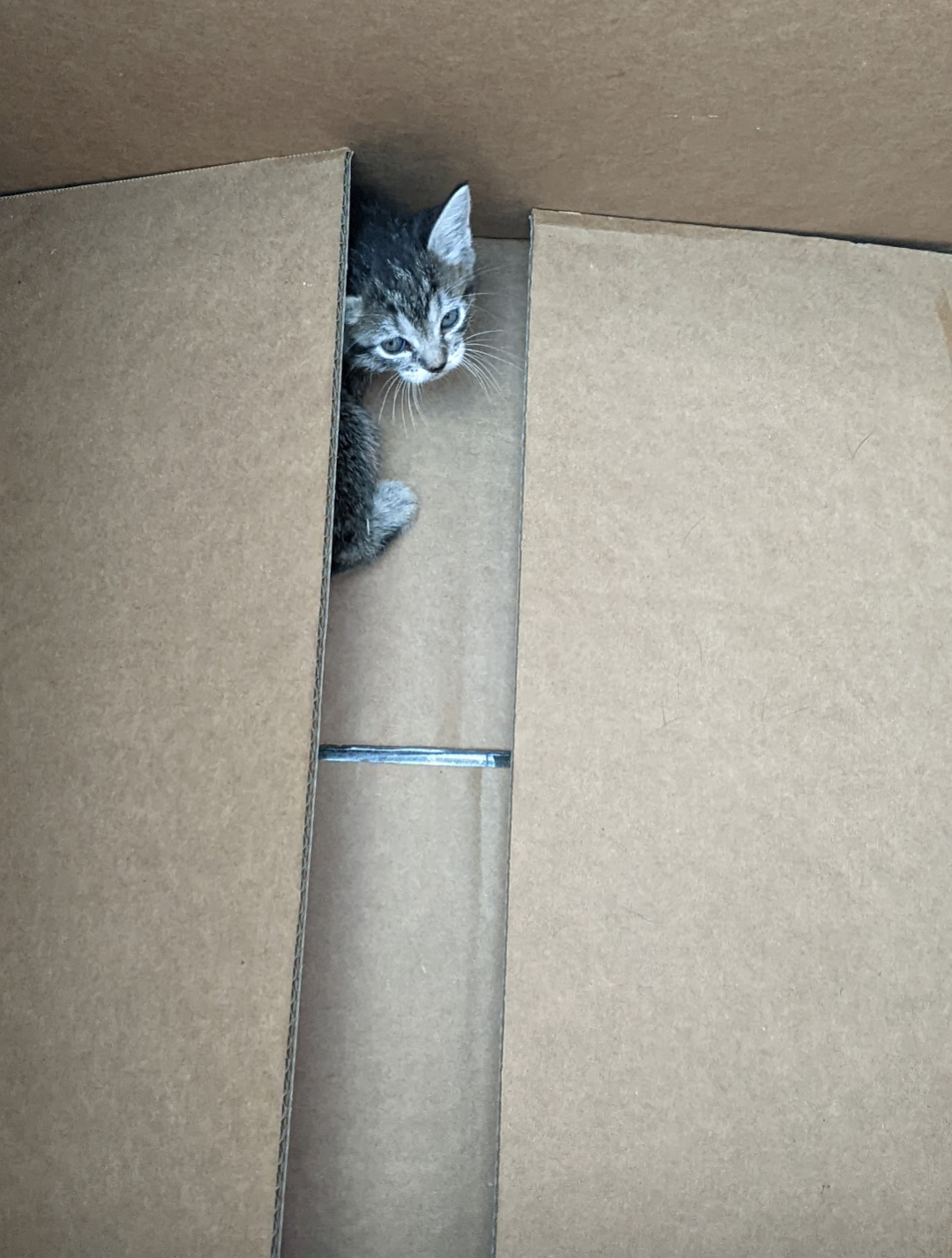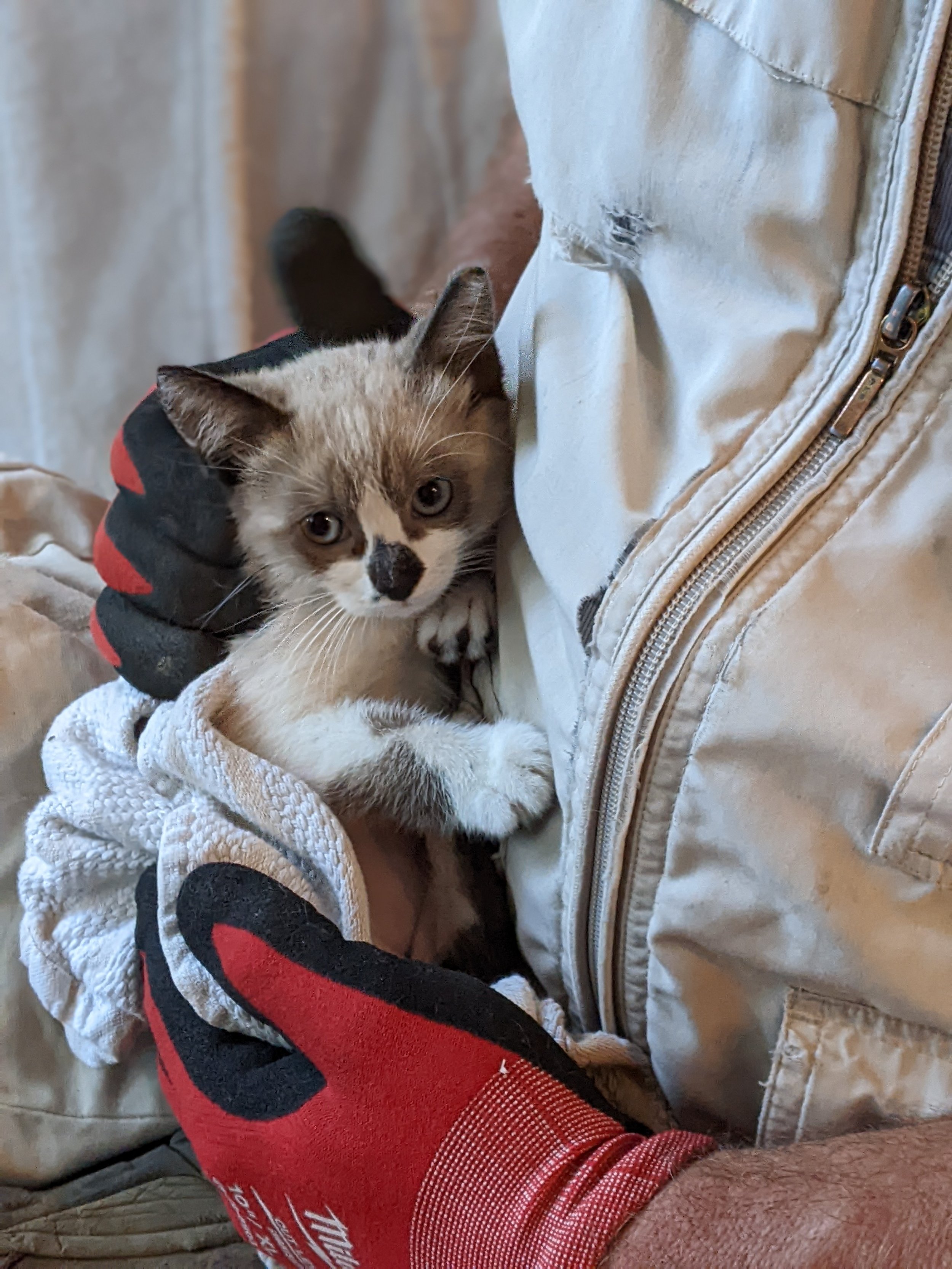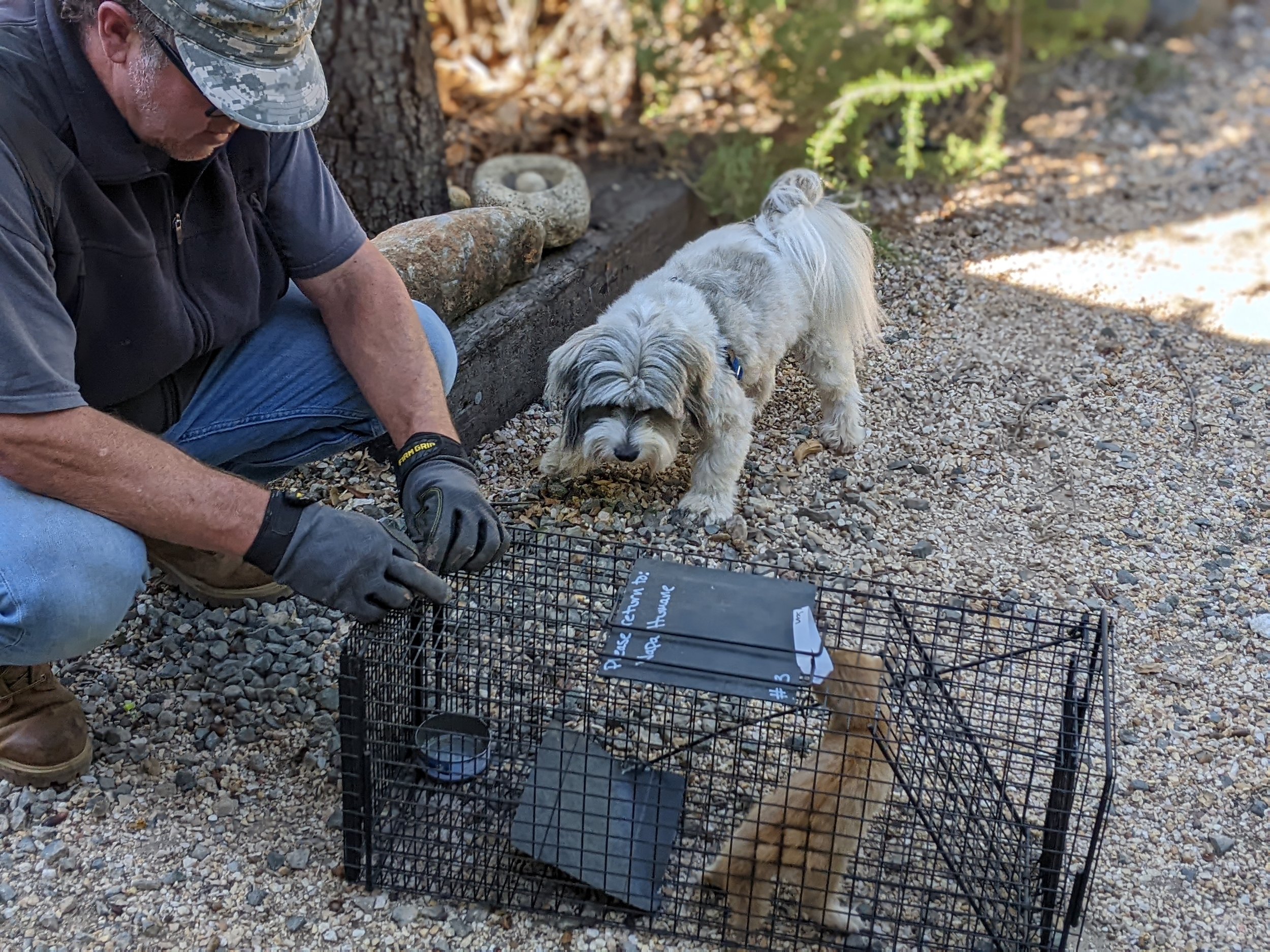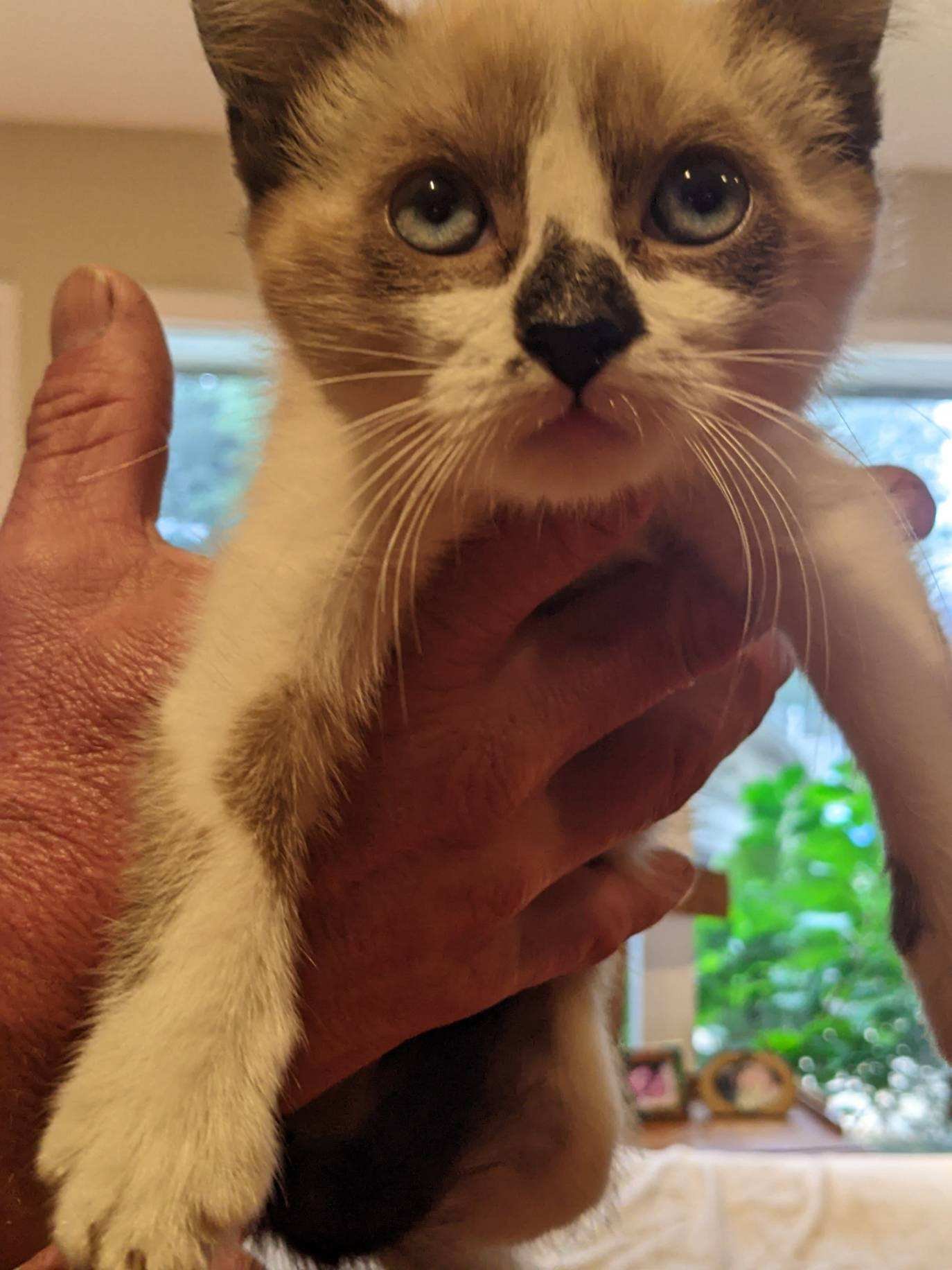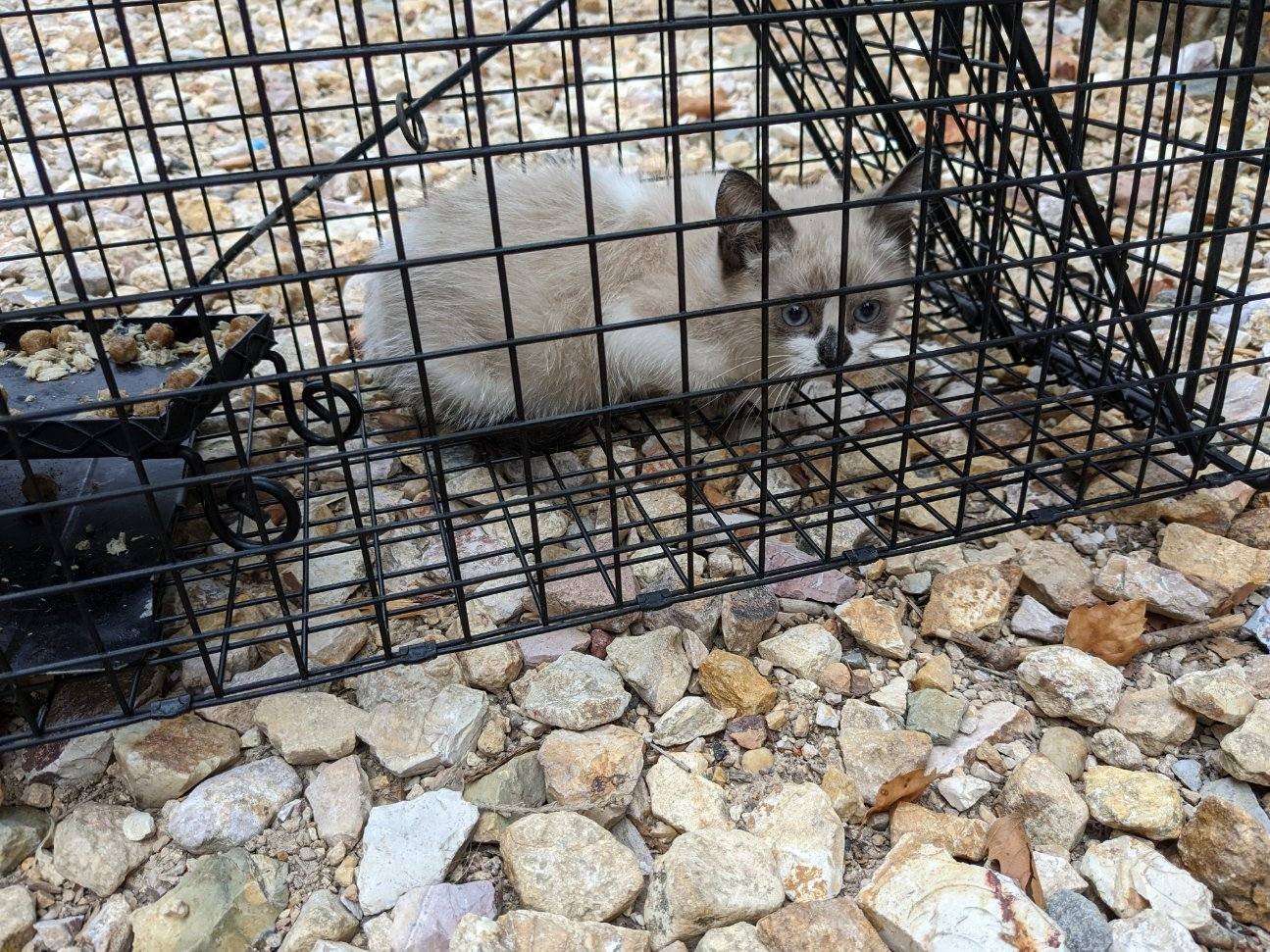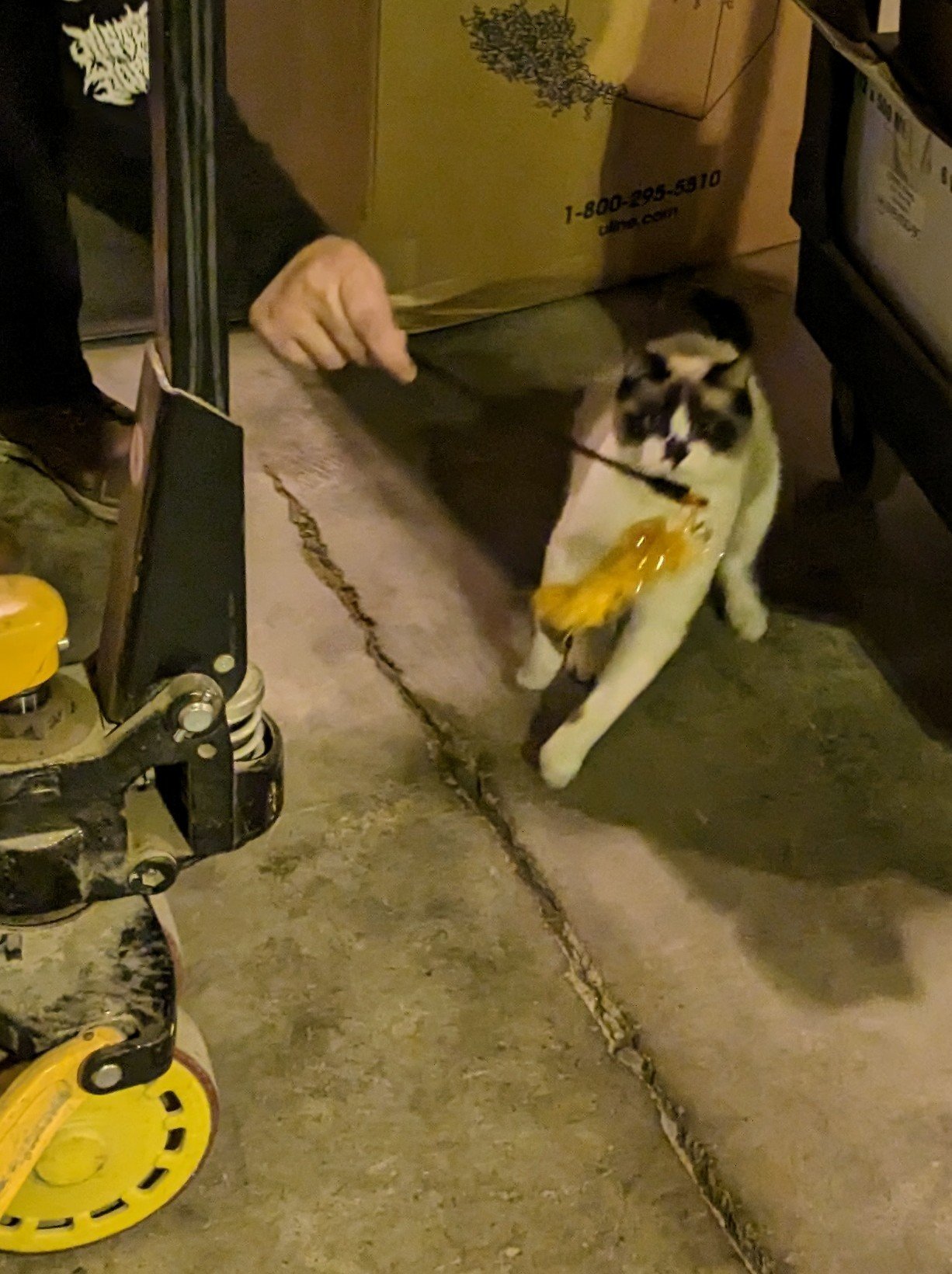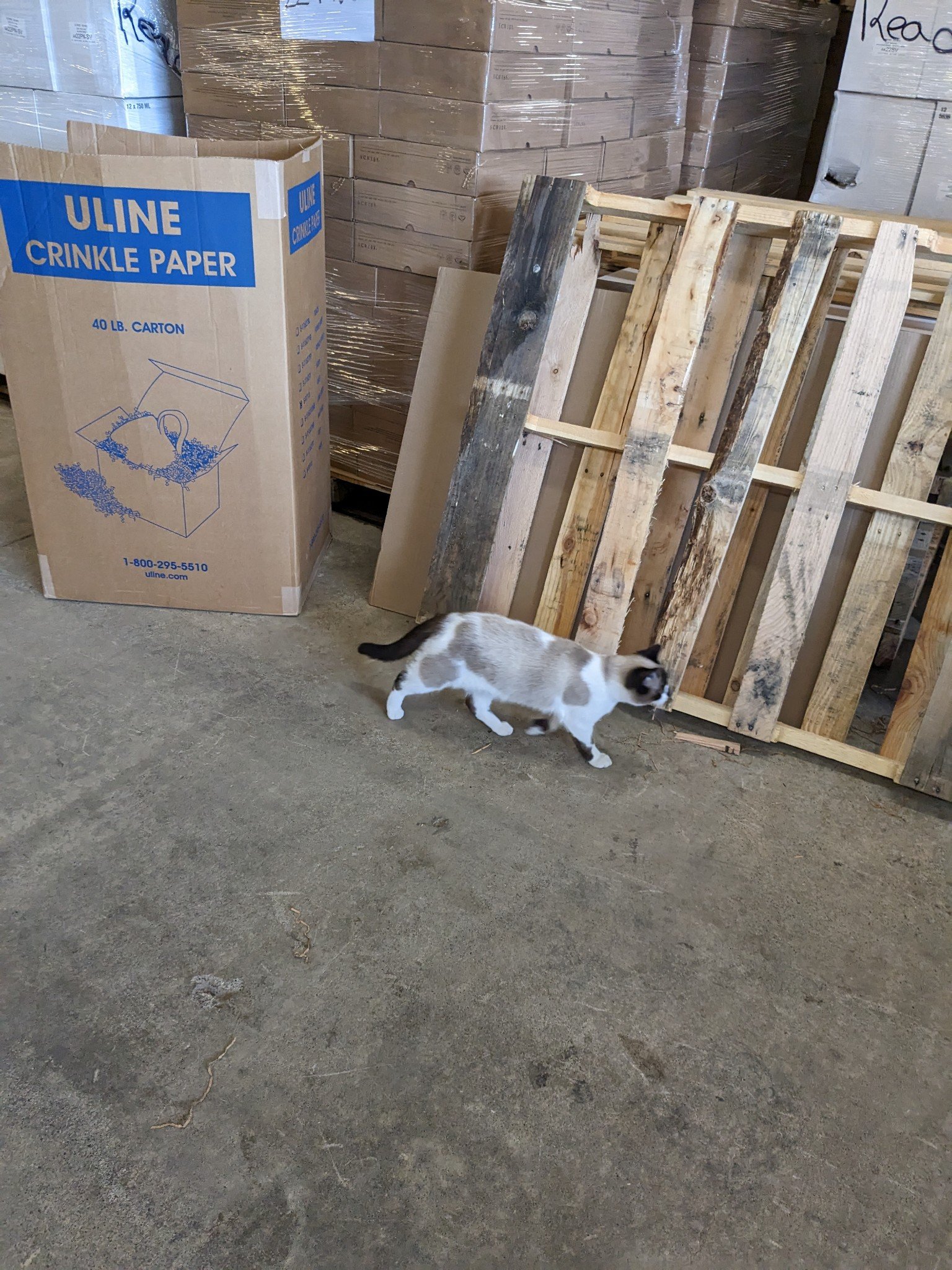Speak Softly to the Skunk
The ghostly mewing emanating from the crawl space beneath our house woke me before dawn. It was a Saturday morning, so I poured a cup of coffee and pulled up the “I Found a Cat” flowchart on our County website. The flowchart, while good at mapping a specific and limited protocol, failed to address the complexity of our situation. The chart started with a question: “Is cat healthy?” I didn’t know, but was willing to take a stab at YES.
One of my top strategies for living a happy life is to avoid time sinks and time traps. They’re everywhere. And no matter how diligently you avoid them, you may still wake up and find yourself square in the middle of one.
That a feral cat would give birth to 4 kittens in our crawl space was perhaps inevitable; our neighbors have an open 25 lb. bag of cat food and about 30 cats in the middle of their driveway. And those are the cats you can see.
The neighboring house has always had a weird energy, in the way that country properties will. Prior inhabitants were an elderly man and his son (whom we called “The Pole-whacker” because would whack a carpet-covered pole with a 2x4 under the moonlight.) One day his chainmail-wearing Live Action Role Playing friends came over with swords, and the kids and I settled into the sandbox, ready to be entertained.
A few years later, new owners constructed a 2,000-square-foot “cat rehabilitation barn” for homeless cats. Kristof coveted the craftsmanship of the barn (“built like a tank”) with copper roof flashing.
The neighbor’s wife passed away. Clouds of marijuana smoke billowed over to our property on a regular basis. It was unclear how many people lived in the tiny, dilapidated, ranch-style house that stood in the shadow of the magnificent barn, but cars, like cats, clustered around the driveway and spilled into the street.
What was once intended to be a cat sanctuary quickly turned into something else. We woke at night to the sound of cat fights and cats running on our roof. Cats with torn ears and runny noses basked in the middle of the road, unmoving; once, when an Amazon delivery van finally flattened one, the body stayed in the road like a cardboard box for weeks. Our little dog chased cats up the olive trees, and Kristof sometimes used a fruit picker pole tool to gently nudge them to the ground, where they landed like low-lying fruits before springing away. Worse yet, the front and side yards smelled like cat poop.
One morning, the kittens ventured out from under the house, fresh with the miracle of new life, both unsteady and agile and blinking their milky blue eyes in the sunlight. Kristof shimmied under the house and fished a kitten out. Victory! I called a local group of volunteer cat experts. “PUT THE KITTEN BACK,” they said, with that condescending tone that volunteer cat experts have. We put the kitten back.
The Humane Society said that our kittens would be eligible for the Trap-Neuter-Return program when they were exactly 8 weeks old and 2 lbs. and lent us a trap. On the very day (I’m positive this is true) that they turned 8 weeks and weighed exactly 2 lbs., mama and three of the kittens split. Where did they go? Maybe hunting under the blackberry bushes by the dry river bed, where coyotes yelp at night after a kill. They left behind a sweet grey kitten with a spot on her nose like a chocolate chip.
By now, I had learned some things from my internet research. Importantly (so it seemed), they were NOT ferals, NOT alley cats. Nor were they strays, street cats, barn cats or tomcats, according to the Humane site. They were “Community Cats.”
I studied English Literature back in the 1980’s as it was self-destructing under the weight of theory, to emerge as something (devoid of aesthetic beauty and intellectual rigor) known as Rhetoric. As a result, I have a special, heightened ability to detect rhetoric like a shark smelling blood in water at concentrations of one part per million.
Rhetoric words are Cheez-Whiz words, fake, fake, fake. Let’s call them Kommunity Kats with K’s for more verve, like Krispy Kreme, why don’t we? Community is a particularly spicy word. It used to have prosaic connotations (community pool, community library, community theatre, community bank) but now “community” can be used to inflict a burden of responsibility.
You know who had real Community Cats? The ancient Egyptians. They worshipped cats.
If we wanted to make good on the concept of the Community Cat for real, perhaps we should transport all the unfortunate felines on the property line (which was beginning to smell like a giant litter box), with their torn ears and runny noses, downtown. Every municipal building could have a dish of cat food and a cat tree inside. Rainy day? Come on inside the Library! We have space for you in the Building Inspector’s office. The DMV welcomes cats, and Jury Duty is lots more fun now that cat toys are provided, free of charge.
I get the purpose of the rhetoric, I do; the cats benefit from it, not because they know or care what they are called, but because our interactions with them are “reframed” by using positive rather than historically marginalizing terminology. Not only did an “outdoor, unowned, free-roaming cat that is social, semi-social, or unsocial” have a special designation (“Community Cat”), Kristof and I also gained a new name: “Trappers.” As in, “Dear Napa Trappers, please be advised that from now on, spay and neuter appointments will be by lottery.” Here’s the problem with this rhetoric: I object to being labeled a Trapper; the word elicits images of Elmer Fudd in his deerstalker. And it assigns me a role that I never wanted: trapping.
We pushed the trap up against the crawl space and covered it with towels, to insure that we would trap the kitten and not something else. From the Humane site, I read how to release a raccoon, for example, from traps with back doors. One could use “binder clips to support the back door handle,” then use a “long dowel or lightweight pipe to grab under the handle and lift up the door.” You may want to practice this first, the site cautioned.
What if you trap an opossum, as sometimes happens, rather than a raccoon? Opossums, I read, mean no harm. “They will hiss at you like a cat and show you their fifty teeth, but that’s about it.”
By now, I was trying to imagine a universe in which I would have the time or patience to practice lifting the back door of a trap with a long dowel to release an opossum; it could only be an imaginary universe with no taxes or red tape or any of the myriad clock parasites that rob us of the time to do the things that really matter to us before we die.
Things were about to get more interesting. “Skunks are reasonable creatures,” I read. Don’t surprise them and they will work with you.”
“Approach the trapped skunk slowly and talk to it gently. Talking is mandatory! Skunks have poor eyesight and will need to know your position through your voice. Speak softly to the skunk and always MOVE SLOWLY.”
“If the skunk gets nervous, it will stamp its front feet. You can’t miss it, it’s NOT subtle. If this happens, STAND STILL. After the skunk calms down in 15 seconds or so, you can continue to move forward. Keep talking gently. Release the skunk as you would a raccoon. When it’s over, you will feel a rush of victory!”
Now that is tempting, that “rush” of victory.
“If the above method is too scary for you, try this one. The chances of the skunk spraying are greater, but you will feel more protected. Cut head and arm holes in a large plastic garbage bag and pull it over your clothes. Get a blanket (best) or LARGE towel and saturate with water. SLOWLY walk towards the trap with the blanket held up in front of you like a shield.”
I had reached my limit. I understood that it would be impossible for me to construct a Monty Pythonesque shield and suit of armor and to approach a trapped (reasonable) skunk while speaking gently to it because it was simply asking too much. The level of frustration I would reach upon inadvertently trapping a skunk instead of a feral cat I never wanted to trap to begin with would be cosmic.
What would I do? If I trapped an opossum, I’d be highly tempted, I tell you, to take it in to the Humane Society and insist that it was a cat. Fifty teeth or no. “This is my cat, Peaches,” I’d say. “Please don’t make fun of her spindly tail, she’s sensitive about it. I think she’s eligible for the Trap-Neuter-Return program because she weighs more than 2 lbs.”
What would I do if I trapped a skunk? I’d be highly tempted to deliver it to my neighbors, along with printed instructions, and to ring the doorbell.
Fortunately, the kitten was easy to trap, and she came back from the Humane Society damp, the fleas combed from her fur, an ear cropped. Kristof reached out to people he knew with barns, wineries or warehouses. “Every winery needs a good mouser,” he said. A warehouse foreman took her in. There, under the sulfur yellow lights, at a constant temperature of 65 degrees, women fulfilled wine orders and wax-dipped wine bottles. They named her Maria, and she is much loved.

